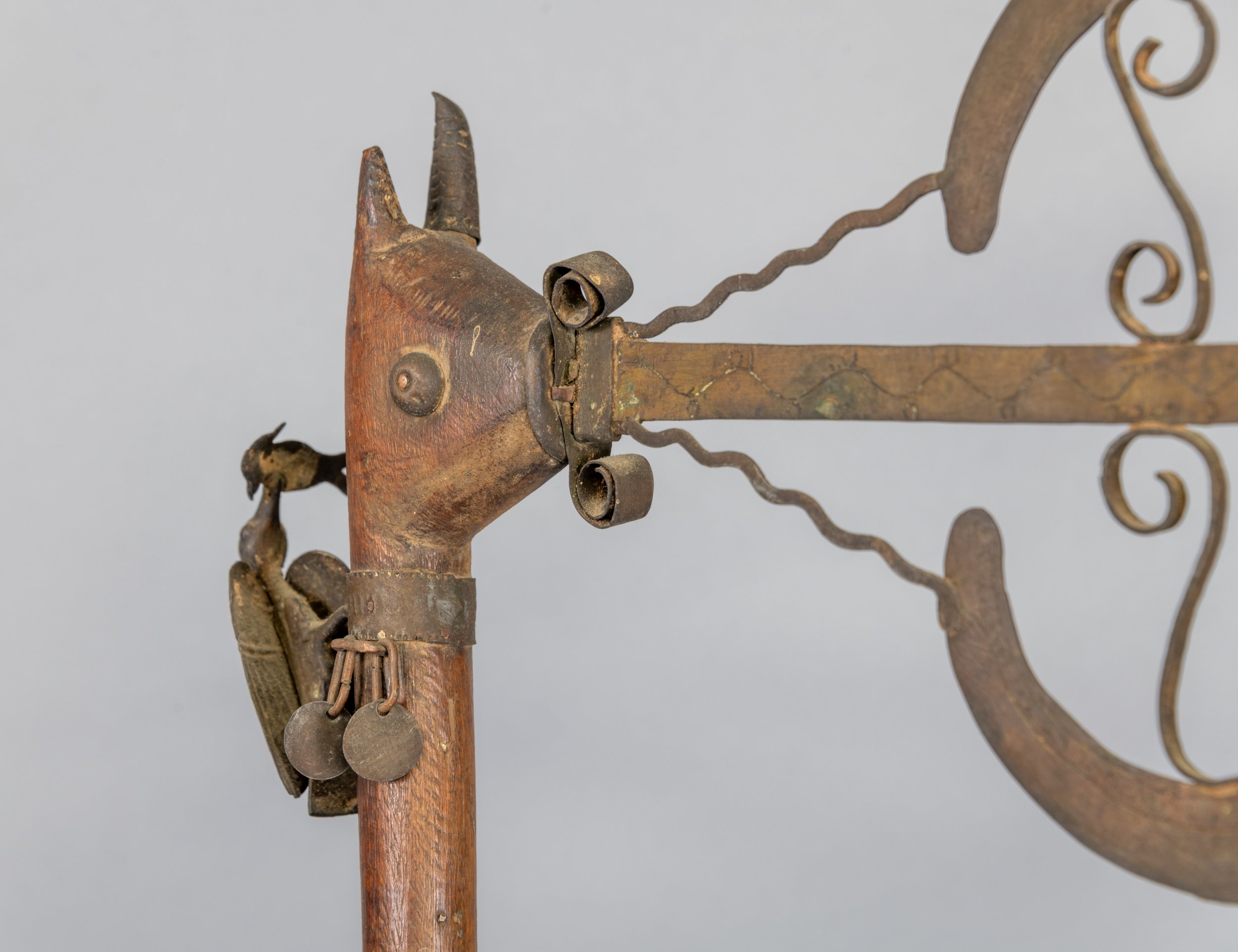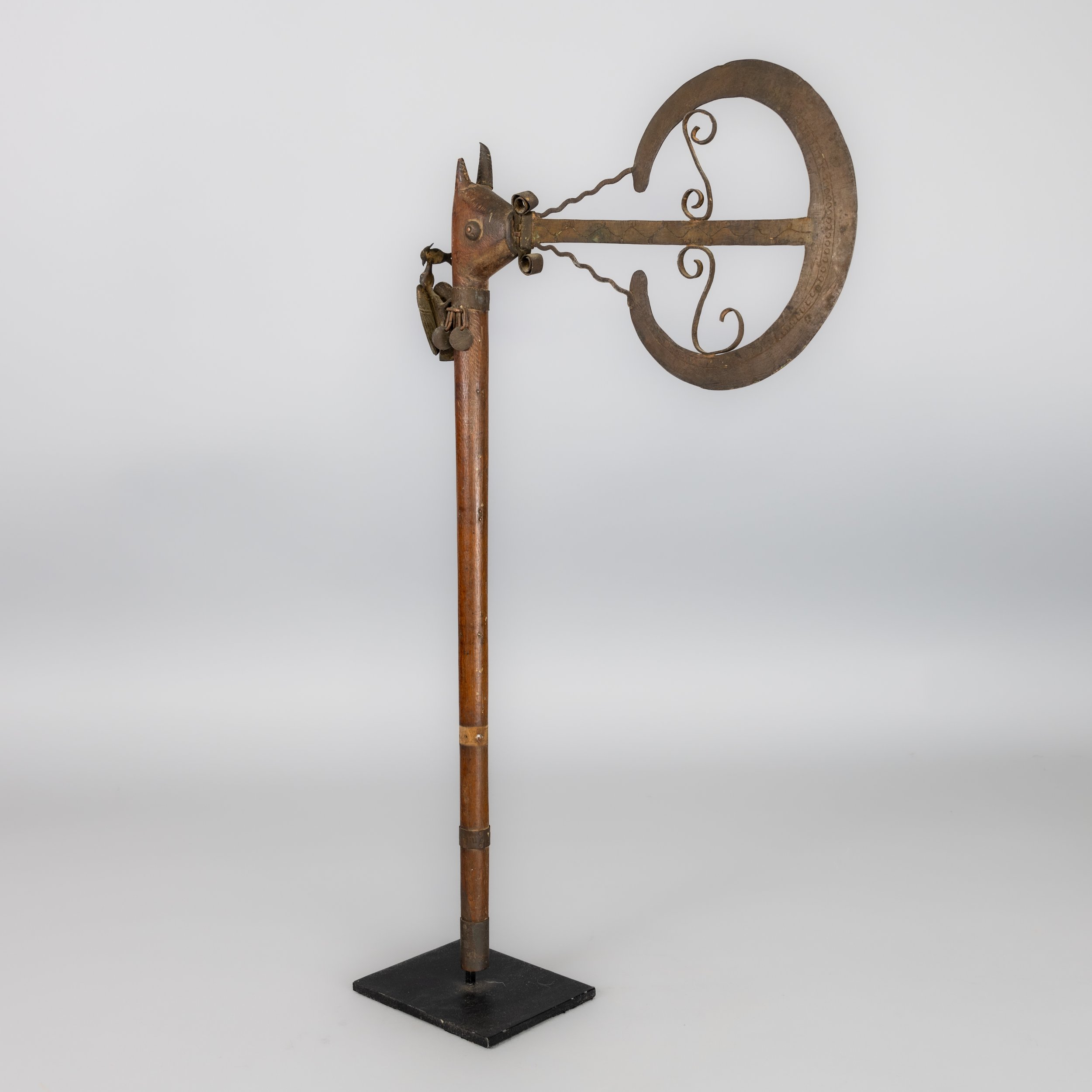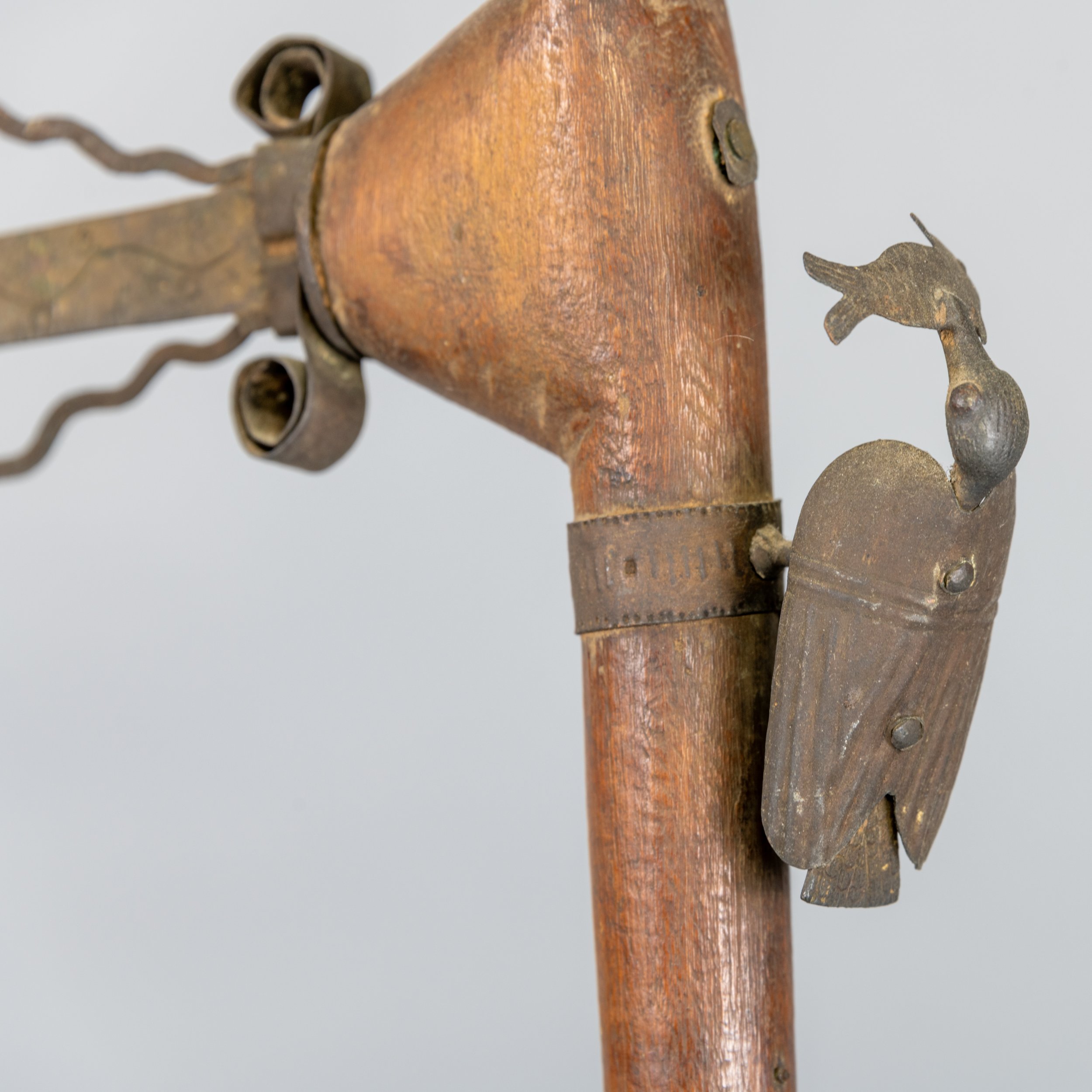








Fon récade referred to as sokpo
Republic of Benin (ex Dahomey)
late 19th - early 20th century
23in / 58.4cm
Made by the Hountondji family guild based on its stylistic elements.
ex Eric Roberts, NYC
ex Matthew Peppin, NY
Aglokpo/wensagunkpo were used by royal messengers, the récade authenticated the provenance of their message. Sokpo is the designation for récades used by the Hùbono, priests of Hebiosso/Hebiesso, the god of thunder. This finely crafted example has a bird on the back side and the bird has a fish in its beak. The animals represented on the backside of the récade generally represented symbols of kings. Gangnihessou, the first king of Dahomey who died in 1620, had the symbol of an gangnihessou bird. The seventh king of Dahomey, Kpengla, ruled from 1774 to 1789 and one of his symbols was an akpan bird. I’m not sure which bird is referenced on this récade becuase they both look somewhat similar, but it most likely refers to the symbol of one of those kings.
The Hountondji family guild, whose members included blacksmiths and jewelers originally worked exclusively for the royal court making metal sculptures and decorative arts of striking originality and beauty. What is less widely known about this famous guild is that the founding family was originally part of the slave trade in Dahomey in the 19th century. Suzanne Preston-Blier wrote that the family demonstrated their ability to craft beautiful objects out of metal and were subsequently given a platform to create objects for the royal court. The family made such a significant impact and change on the art production of the Fon, even though they were not Fon themselves, that they had a city quarter named after them. Such was their demand that their family head, Kpahissou was given a prestigious royal title due to his followers' ability to make any item both local and foreign.
This particular récade is crafted with the original metal crafting techniques used for objects like this. The After 1910, the Hountondji Royal Guild artists also began fashioning objects from brass made through lost-wax casting, a tradition that owes its roots to another talented smith, Tahozangbe's Hountondji’s son, Gnassounou Hountondji, who attended the Colonial Exposition in Marseilles in 1906 and learned this art form there.
$1500 plus shipping - SOLD
Custom mount included.
La mission du roi Béhanzin à Paris (King Behanzin’s mission to Paris)
Photo: Photographer unknown, from Le Petit Journal (1893)
I’ve added this photo in order to give a little more visual context between a aglokpo/wensagunkpo récade (used by messengers of the king) and a sokpo récade (used by priests of the Fon deity of thunder).
This depiction is from a French journal of a diplomatic mission sent by King Behanzin (1889–1894) of Dahomey in 1893. There, three bare-chested men appear sitting on their knees on the lower row of the picture and are described as “slaves,” they are the only unnamed characters of the picture. The rightmost of these three characters holds a sokpo in his left hand. The stem and the points of crescent of the So symbol are linked by two rows of zigzags. As we have seen, this feature is is characteristic of high-ranking So priests’ wands.
In this same picture, a character named Chedingen is shown in the middle row of the picture holding a aglokpo/wensagunkpo. The curved part of the staff is sculpted as what appears to be a shark, the symbol of King Behanzin. Chedingen is described as “the head of the mission”.
Click/Tap on any image below to bring up the image viewer.
INQUIRE
If you have questions, requests for high resolution photos, or would like to inquire about purchasing this object please use this form.


